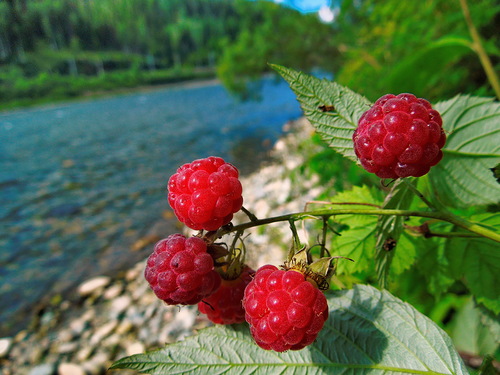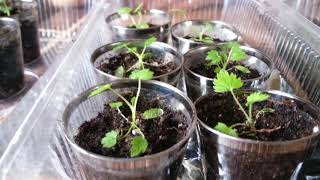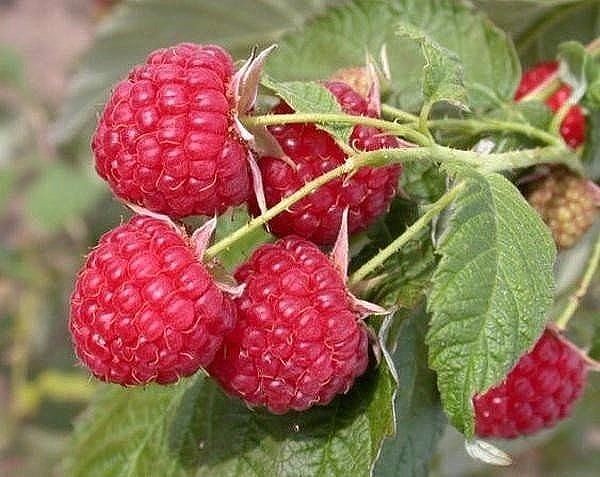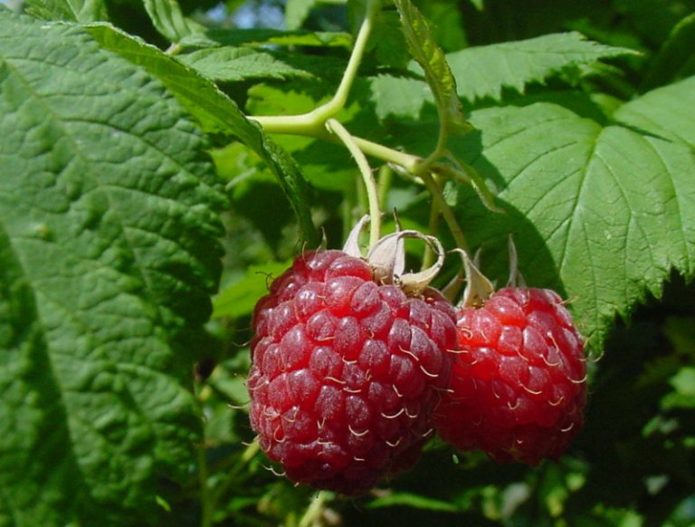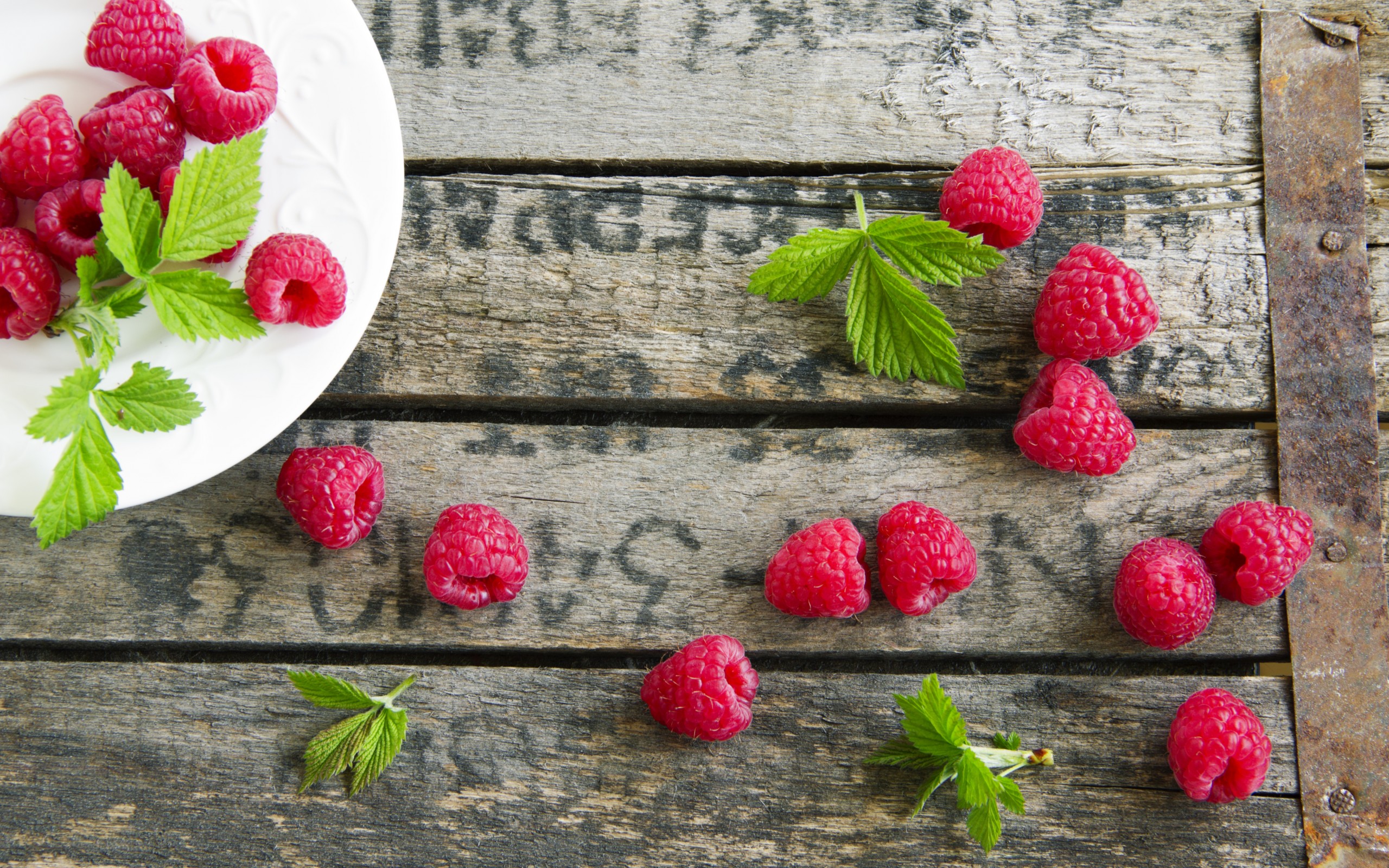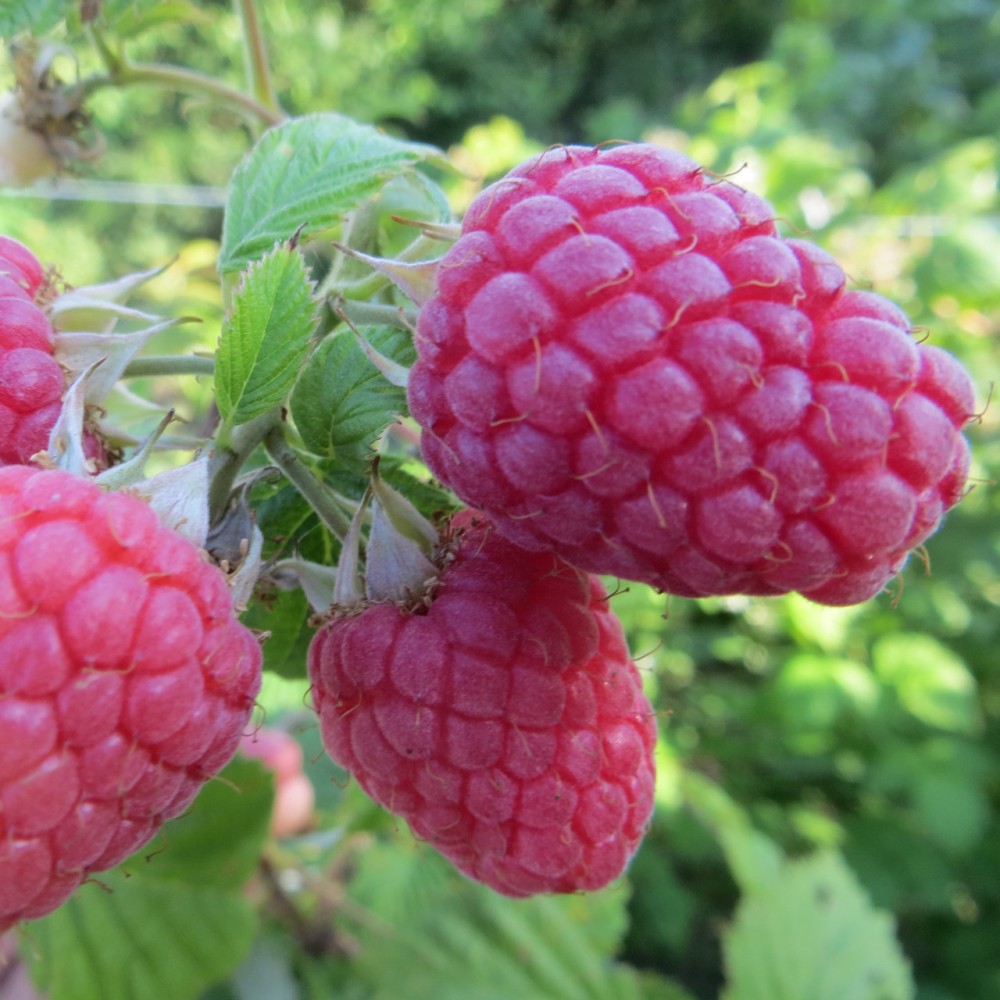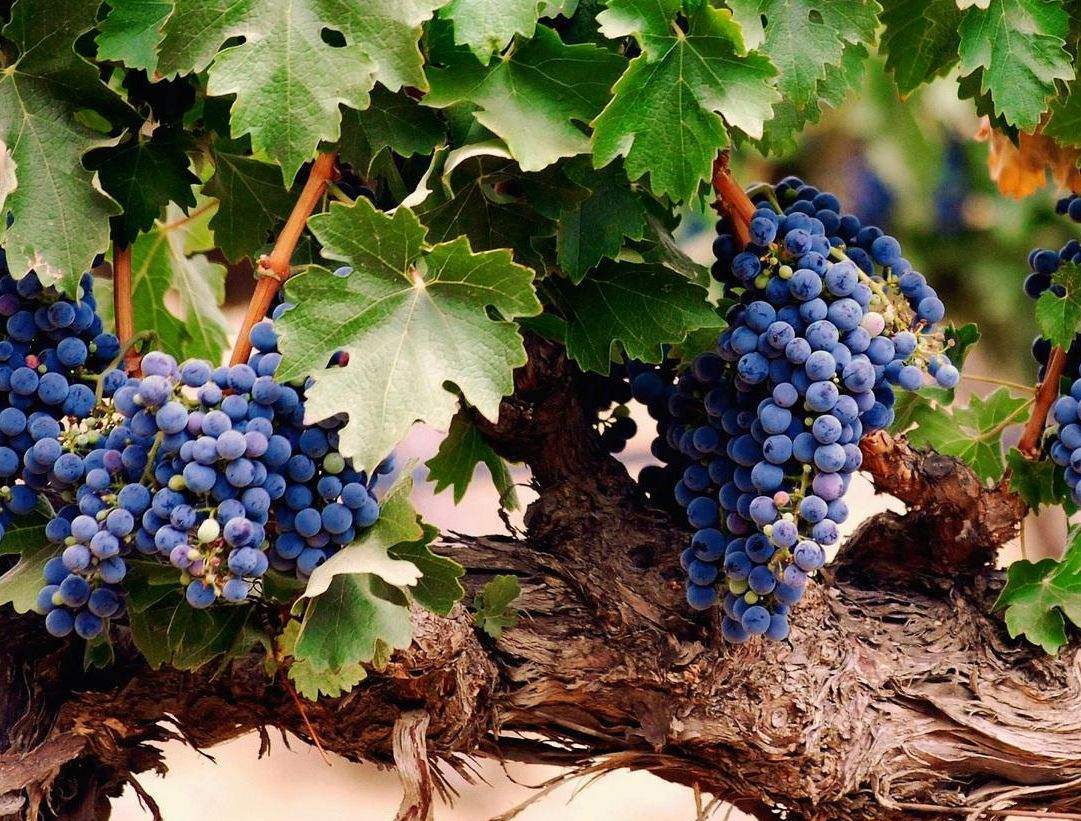In the wild, the European raspberry (Rubusidaeus) grows in the shady and humid forests of Russia and Europe up to Central Asia and the Scandinavian Peninsula. In Central Russia - almost everywhere, mainly in sandy loam, in pine and mixed forests. But this does not mean at all that in cultivated gardens it must be planted in the same lighting conditions and in the same soil.
Content
Planting raspberries
Forest raspberries are a bit sour than cultivated ones, but this is not due to varietal characteristics. In the shade of the forest, the plant receives less sunlight, namely, in the light, all plants produce sugars and fructose. You can see that in the forest, raspberries grow better in illuminated glades and forest edges.
And forest sandstone differs from steppe in that there is a huge amount of organic matter in the forest, accumulated over many decades from fallen and decayed needles, foliage and plants. Many people are still engaged in harvesting forest raspberries. But it is possible to get a guaranteed significant harvest only from cultivated plantations in well-lit areas with suitable soil.
Calculating how much you need to plant raspberries in order to be enough for a family, you can only know the estimated yield. The yield of 4–5 kg per bush is considered high. 5-6 kg per bush - almost a record. In reality, calculations can be based on the figure of 1.7-2 kg per bush. It should be noted that the full harvest of raspberries begins to give from the third year. Although it bears fruit well in the second year after planting. There are varieties that have time to bear fruit on the tops of the shoots in the first year.
Soil and place
Raspberries love loose sandy loam soils, because such soil does not allow water to stagnate, which raspberries cannot stand. In too damp places, roots die off in summer, and in winter they freeze out due to a large amount of ice in the soil. It can be planted near water bodies, but at a height above water level and at a distance sufficient to prevent root trapping even in spring during the snowmelt period and in autumn during the rainy season.
Another harmful extreme is the drying out of the soil. In the forest shade under a thick layer of turf, it is almost always wet. In cultivated areas exposed to the sun and wind, moisture evaporates faster. Therefore, raspberries grow well in gardens and on water-retaining loams, chernozems and other slightly acidic soils with a pH of 6.0-6.7. On clean sandstones, before planting, you need to add a lot of humus and water often in dry weather, because the sand does not hold water at all.
The landing site should not be located where there is constant draft and sometimes strong wind currents between buildings. This scares off pollinating insects, and gusts of wind can break bushes.
In a sunny place, raspberries will grow and bear fruit better, but they also tolerate partial shading, no closer than 3 m to shading tall trees and buildings.
It is better to prepare the soil for planting in the fall. All weeds are removed. Especially perennials are serious competitors that can inhibit the growth of raspberries. The rows are located from north to south, this will provide better illumination. A trench three bayonets wide with a shovel and one bayonet deep is dug under the stretched cord. The soil is thrown aside. There is no need to add organic matter on rich fertile soils. On scanty, especially sandy steppe soils, organic matter must be introduced. Humus from manure or compost is laid at the bottom of the ditch with a layer of 8–10 cm. Since they are most often excessively acidic, you can sprinkle the organic matter with wood ash, dolomite flour or lime - fluff. Overdosing with wood ash is possible only if you pour it in huge quantities, more than 0.5 liters per 10 liters of soil. Dolomite flour and lime are dosed, not more than 40 g per 1 sq. M.
Then the discarded soil is laid back into the trench, mixing it with organic matter during work. This method is used for planting on cultivated, or cultivated, but recently abandoned plantations.
The virgin land, the so-called novye, is prepared in a different way. The trench is dug deeper, 1.5–2 bayonets. At the bottom of the trench, soil is laid with a layer of turf, roots up. After rotting, the turf will provide nutrition to the raspberries for many years. Such a deep digging on virgin soil is necessary so that the top layer of the earth, which contains thousands of weed seeds and their root networks, go to the very bottom. From a depth of 25–40 cm or more, weeds will no longer be able to break through either by seed shoots or root shoots. This is important because clearing a wild overgrown area of weeds is a very time consuming task and the main problem in the development of wild areas.
The trench method is used for planting in rows. When planting randomly, the soil is prepared as well, but they do not dig a continuous trench, but separate holes for each bush. This planting method is called bush.
On virgin lands, all the soil that has not been dug up between the rows can be cultivated, getting rid of weeds, in the following way. Any available opaque material is spread, under which all weed shoots will rot during the summer.
Timing and storage of cuttings
Raspberries are planted during dormancy, in the fall after leaf fall and the plant leaves in winter sleep or in spring before the start of sap flow. Autumn planting will require shelter from frost with straw or shavings, if there are no powerful snowdrifts. There is a danger here - during prolonged thaws, decay processes can begin.
If the seedlings have already been purchased and could not be planted in the fall, you can do this in the spring, before the start of active growth. This is around mid-April.
In winter, seedlings are stored at temperatures from 0 to 5 degrees. The roots are dipped into any container and covered with wet sand or peat. It is risky to use sawdust instead of sand, as some sources recommend. Oak sawdust contains a lot of tannins that will destroy the roots. In conifers, there are many resinous substances harmful to the fibrous roots. All band sawmills work during the cold season, wetting the saw blades with diesel fuel. As a result, the sawdust is heavily saturated with this petroleum product, which will destroy all living things. And even clean sawdust of soft-leaved species can simply rot in winter, which will also destroy the root system.
Often raspberries are propagated in mid-summer by root shoots. Use young shoots with part of the root system from a healthy uterine bush of the desired variety. It is planted in the same way as seedlings in autumn and spring, but there is an important difference. You need to dig out the shoots with as large a lump of earth as possible, while not overdoing it so as not to harm the mother plant. The roots are not shaken off. Ideally, the transplant is carried out directly from the ground to the ground, then the plant takes root faster.If it is far to the new planting site, or there is no time to transplant within a few hours, the seedlings are stored in the shade. Direct sunlight kills thin root webs. The clod of earth and roots should not be allowed to dry out, so it is advisable to cover them with a damp cloth.
Intervals
A bush from a bush in a row of 45 cm, between rows from 1.5 - 2 m. Relatively speaking, this is the approximate interval between plants, which shows what approximately the area of nutrition the bush needs. The distances between the bushes vary depending on how the trellises are tied, which is discussed below in the trellis sections.
Landing
If the seedling was dug up for a long time and was stored with open roots, and not in a special container from a nursery with a closed root system, then before planting, the roots are dipped in a container with water for about two hours. Overexposure is not recommended. roots can get locked.
When transplanting root shoots from the ground, it is not required to soak directly into the ground.
The roots are carefully straightened mainly in width, and not in depth and planted no deeper than 10 cm.If the pit is too deep, a mound of earth is poured onto its bottom, roots are placed on its peak and the roots are covered with loose soil. If planted deeper, raspberries develop new root shoots worse. Then the soil is crushed with your feet and watered a little to compact the soil. it is advisable to cover the planting site with a thick layer of warming mulch. This will save the roots from freezing if suddenly severe frosts begin before the snow falls. Having planted a seedling in the fall, you need to cut it above the bud so that only 20-30 cm remains above the ground.
In the spring, when new shoots begin to grow, this old shoot must be cut off again, near the ground, at the very root. If left, it can produce a crop for the same year. But this will slow down the overall development of the bush and significantly reduce the yields of future years.
Landing in a limited space
Raspberries constantly form a lot of root growth, which must be constantly removed to avoid wild growth and thickening. To avoid this costly operation for the strength of the plant and the labor of the gardener, raspberries are planted in a closed root space. To do this, use a cylindrical container through which roots cannot penetrate, 40–50 cm in diameter and up to 50 cm long. The bottom must be open. Such cylinders are often made from improvised material, for example, old linoleum, sheet plastic, roofing roll material such as roofing felt, rubemast, etc. The container is placed in a trench, then disembarkation is carried out in the same way as in an open trench. The top of the container should be at ground level. Sometimes it is deliberately placed above the ground, making it similar to growing raspberries in tubs.
But you must understand that in this case, in the summer, the soil above, in the sun and wind, small in volume, will dry out in a matter of hours. And the care of frequent watering when there is no rain will be entirely on the owner of such a plant. And most importantly, when planting a plant in an enclosed space, you inevitably reduce such an important development factor as the feeding area. As the bush grows, it may very soon become insufficient and the plant will not be able to develop at full strength.
You don't need to put anything in car tires, not just raspberries. All plants develop worse in them. Serious science has not stooped to such a trifle, and there is no scientific explanation for this. Perhaps the black rubber overheats in the sun, the roots dry out and burn out. Or harmful substances are released from heating. Or there is a constant lack of moisture on a hot elevation.
You can experiment, but it is better to send the tire where it belongs, to a landfill. And plant a plant without bullying, in a natural way.
Landing on an artificially dumped, raised ridge both in a limited and in an open space is justified only for damp lowland areas. But it is better to fill the area not in rows, but completely. Because when planting without limiting the volume of the root system, i.e.without a closed perimeter, without dishes - the roots will surely climb out of the ridges into the open air and burn. They will constantly need to fall asleep. Sooner or later, you will have to fill up the entire area. It is possible to plant raspberries in a closed volume in a lowland, but this method has disadvantages, which were discussed above.
Garter
When raspberries grow to a height of about 1.2–1.5 m, they need to be tied up. Otherwise, it will lie on the ground or break from the weight of berries or the wind, various methods of garters are used.
- On a single trellis.
- On a double trellis.
- For individual colas.
- Scandinavian garter.
It seems to be difficult. In fact, everything is extremely simple - each tall stalk of raspberries must be tied up or must lean on a wire without a tie, that is, have an additional point of support.
The distance between the bushes when planting depends on the choice of the garter method. Bushes on double trellis and trellis in the Scandinavian system grow thicker. Therefore, the distance between seedlings in a row is increased when planting.
Trellis garter
High colas, up to 2 m above the surface, are driven in or dug in along the row. A wire is put through them in three rows - the first at a height of 75 cm from the ground, the second 105 cm and the third 165 cm. The more powerful the colas and the more firmly they are held in the ground, the greater the distance between them. Determined locally in reality. Most often between the stakes 3.5-4.5 m.
Where required, bushes are tied to the wire with a soft, non-traumatic material - linen twine, cut into strips of soft tissue.
Double trellis - the same, but two rows of stakes and wires are placed parallel on both sides of one row of raspberries. Advantages: stakes of parallel rows can be knocked together with a crossbar, and therefore the structure is more stable, you can use a bar of a smaller section. Wire the wire is run in three rows, just like on a single trellis. On a double trellis, you can form more shoots, a more spreading bush and get a noticeably larger yield. The downside is that the middle of the row will always be thickened, and this is the risk of developing fungal diseases. It will also be difficult to access the middle of the plantings for harvesting.
The Scandinavian system is similar to a double trellis in that two rows of stakes are also placed parallel to the left and right of the raspberry row. Between them, 1 m. The stakes are much lower, 1.5 m above the ground. Only one row of wire 1 m high from the ground is allowed through them. With this method, the raspberry is not tied, but lies down and braided on the left and right rows of wire, forming, when viewed from the end of the row, a V-shaped shape. New shoots grow in the middle of the row without support. Sometimes, with the Scandinavian system, not two parallel rows of stakes are used, but one in the middle with a cross-shaped crossbar.
The disadvantage of this method, as well as with a garter on a double trellis, is a higher thickening and therefore a tendency to fungal diseases. Therefore, when planting on thickened double and Scandinavian trellises, it is necessary to increase the distance between rows to 2 m, and the distance between bushes in a row to 55–70 cm.
Single supports
If few bushes are planted, it is easier to use separate colas for each bush. You can change them every year, increasing the height as you grow. Or immediately fix a reliable post 2–2.3 m high.
Trellis materials
The most commonly used metal knitting wire. But sometimes, especially in the Scandinavian system, it can injure the shoots. Therefore, soft synthetic cords can be used. which do not crumble by the end of the season from sunlight.
On vertical supports - colas - pipes, metal fittings, corners, glass fittings, wooden bars are used. The most convenient, accessible and cheapest of all is wood, but it rots in the ground. The tree can be treated with an antiseptic, but any antiseptic in the ground is harmful not only to putrefactive bacteria, but also to plants.Therefore, for perennial tapestries, the combined option is better suited. A metal scrap of a corner 25 by 25, 40 by 40 or 50 by 50, about 1 m long, is half driven into the ground. To it, through holes with a diameter of 3-5 mm prepared in advance in the corner, the bar is screwed onto self-tapping screws or nailed. The tree will last a long time in the air. For reliability, it can be impregnated with oil varnish heated to 45–55 degrees.
Garter for winter
In winter, raspberry shoots will be subjected to completely different loads. Snow and even ice stick to them, under its weight they can all break. To counter this, in autumn, all the shoots of one bush are brought together in the form of a sheaf and tied together with soft knitting material, a strip of fabric or linen twine.
Recently, a new type has appeared - standard raspberries. It looks like a small tree, has powerful branches and does not need a garter at all.
Care
Basic care operations
- Garter as you grow.
- Pruning.
- Weeding.
- Watering.
- Top dressing.
Initial pruning
In the first two years, raspberries give few shoots, then a lot. The first major pruning is done in the early summer of the second year. Remove weak and sideways shoots. It is optimal to leave 7-9 shoots on the bush.
Bush formation
Held annually after the second year. Closer to autumn, after the end of fruiting, the branches that have borne this year are cut to the base. leave 4-8 shoots on the bush. On a single trellis, shoots are tied to a wire at a distance of 8–10 cm from each other.
According to the Scandinavian system, the shoots are not tied, but wrapped on a wire equally on both sides. This is done in late August - early September, while the shoots have not yet dried up and remain flexible. 4-6 shoots are taken together, in one bunch, and carefully braided once around the wire, like a rope.
Fruit-bearing stems are tied to single supports to posts, and the growing ones are tied up as they grow.
In early spring, the top of the longest shoots is cut off about 15 cm above the kidney closest to this distance. These tops, as a rule, are the most damaged by frost in winter. This is especially true for the northern regions. Removal of the tops simultaneously stimulates the development of the lower kidneys.
Care during the warm season
Shallow loosening, so as not to damage the roots, removes all weeds and excess root shoots. In the period without rain, regular watering is necessary. to keep the earth moist. overflows are highly undesirable. It is necessary to pour it at the root, not wetting the foliage and stems, so as not to provoke the development of fungal diseases.
It is advisable to mulch the entire surface of the soil under the raspberries with dry needles with a layer of 7–10 cm thick. This will give a number of advantages:
- protect the soil from drying out, greatly reduce the need for irrigation
- will create a favorable environment in the upper soil layer, it will be soft, without crust and cracks
- will drown out the shoots of most weeds, so there will be no need for frequent weeding
- rotted mulch will provide raspberries with valuable feeding for a long period.
Instead of needles, you can mulch with humus, manure or peat. But dry needles are best. It inhibits the development of fungi, has a bactericidal effect and is a native environment for raspberries, because in the wild, raspberries grow mainly in coniferous forests, where the entire territory is covered with such mulch.
In autumn, potassium sulfate is scattered over the entire planting area in a dose of 30 g per 1 sq. m. Raspberries gradually draw out phosphorus from the soil, therefore, every three years, superphosphate is scattered at a dose of 60 g per 1 sq. m. In the spring, ammonium sulfate is introduced in the same way in a dose of 15 g per 1 sq. m. m.
On fertile soils, with normal development of shoots, feeding in the first three years can be completely excluded.
It is important to know that raspberries cannot be grown in one place for more than ten years. During this time, harmful factors accumulate. The supply of all the nutrients necessary for raspberries in the soil is completely depleted.colonies of harmful viruses, pathogenic fungi, substances toxic to raspberries accumulate and the plant can no longer grow normally further. Planting is done in a new place, and if the layout of the site does not allow this, the old soil is removed to a depth of at least 60 cm and a width of about 50 cm. Fresh healthy soil is loaded instead.
Diseases and pests
Raspberries can suffer from misfortunes common to all berry bushes. - aphids, rot, viral diseases. Of the pests inherent only to her, only the raspberry beetle is known.
In late February and early March, raspberries, like currants, should preferably be doused with boiling water from a garden watering can. This destroys all the embryos of pests hibernating in the buds. In summer. when aphids appear. raspberry beetle and other pests, a trial treatment is being carried out - dusting the foliage with tobacco dust and ash in a 1: 1 ratio. as a rule, this is guaranteed to drive away any pests, but they may return soon. You can repeat the treatment or apply the recommended insecticidal preparation according to the instructions.
The most dangerous are viral diseases. Their sign is ugly stems, leaves covered with spots of any color, just not green. The fact that the plant is unhealthy can be seen from afar and immediately. Many viral diseases inevitably destroy the plant, there is no remedy for them. But only an on-site specialist can diagnose a specific disease. Sometimes stems and leaves can be deformed for completely different reasons:
- abnormally cold, rainy or dry, hot weather
- harmful emissions into the atmosphere, acid rain
- lack or excess of certain substances in the soil.
Reproduction of raspberries
Three main ways of breeding raspberries
- seeds
- cuttings
- root processes.
Seed propagation is a more laborious and time consuming process. It is used on an industrial scale when it is required to obtain a huge number of standard seedlings with the same starting qualities. In individual gardening, it is also possible to grow seedlings from seeds, because they have several advantages:
- seedlings from seeds are free from diseases and pathogenic microorganisms that accumulate in cuttings and root shoots from an adult plant.
- seedlings from seeds in most cases renew the variety, eliminate unwanted changes in the phenotype (degeneration of the variety), which can occur in an old plant over many years.
The seeds are taken from overripe dark crimson berries. They are squeezed out in a gauze bag, the remaining paste with seeds is smeared on a sheet of paper and cardboard, dried in the shade. Seeds cannot be overdried too much. They are planted from early February to mid-April in a container of 0.5 - 1 liter in ordinary seedling soil, grown on balconies, window sills and greenhouses.
You will also have to grow seedlings from seeds of a suitable variety purchased at the store, if there is simply nowhere to take cuttings and shoots of this variety.
Growing from cuttings is also not the easiest way, it is described in detail in many sources. And in order not to complicate your life, it is recommended to propagate raspberries by root shoots. It is removed and is often discarded during pruning and weeding. For reproduction, the excess shoot must be separated from the bush along with the roots, prying the roots with a pitchfork. The more roots the better. With this method, the main task is to find a healthy parent plant of a suitable variety.
Features of growing by region
Raspberries grow well in all regions where they are common and in the wild. Basically, the agricultural technology for growing raspberries in the Moscow region, the Urals, Siberia, Ukraine and other regions is the same. But there are noticeable discrepancies.
In the north
Raspberry is a plant with a perennial root system. Shoots can be annual, although it bears fruit mainly on two-year shoots. Therefore, the main task in the north is to keep the root system and shoots from freezing, which should bear fruit next year.The root system is covered for the winter with a layer of mulch of 10-15 cm without fail. Better fallen needles and leaves from the forest. If severe frosts have begun without a snow cover, the mulch layer should be even thicker, about 25–30 cm. In the northern regions, raspberry shoots are saved from freezing by bending to the soil and covered with snow or mulch. In Lipetsk, Voronezh and other regions of the Central Black Earth region and to the south, raspberries most often overwinter over snow bound in sheaves, as described above. Of course, there cannot be a clear geographical border where raspberries should be laid under the snow, and where they should be left vertically. This is determined empirically, everyone looks at how raspberries winters at a neighbor, and whether they survived or not. A clear distinction is also impossible because different winters occur in the same places.
For the north, remontant varieties are suitable, which in the fall are cut completely to the soil, and there is simply nothing to freeze out except the root system. Standard varieties are less suitable, because they are not cut off for the winter and it is impossible to bend and spread them on the soil under the snowdrifts.
Advantages of northern cultivation - there are fewer pests than in the warm south. Many people simply cannot hibernate in severe frosts.
In any case, it is advisable to use proven winter-hardy varieties recommended by the State Register of Breeding Achievements. For instance:
Meteor
The variety was bred using a good domestic variety Novost Kuzmina and a Bulgarian variety Kostinbrodskaya, which has been tested in our conditions, which improved the quality of the new variety. Productivity is about 7 kg from 10 sq.m.
The meteor was created in 1979, was tested at selection stations for 14 long years. Approved for use in the Volga region, Volgo-Vyatka, North-West, and most importantly - in the Northern regions.
On South
And this variety, on the contrary, is better suited for the southern regions:
Brigantine
The variety is resistant to drought and high temperatures. It bears fruit late, in August, but in a warm climate this is more of a plus. He has time to fructify before cold weather in warm climates, and the berry will not be sour from the cold. And in August there are almost no raspberries on the markets, because their value is higher at this time. The variety was included in the State Register in 1997 and is recommended for the Central Black Earth and East Siberian regions. But in practice, it has long been successfully grown in the gardens of more southern and northern regions.
Excessive heat from the south can dry out the soil and plant and sterilize the flowers. Therefore, in the south, raspberries can be planted in partial shade, that is, in places where the sun falls on incomplete daylight hours.
Landing dates in different regions are not tied to a clear calendar date.
- In autumn, this is everywhere the period from the moment when foliage flew from the raspberry bushes to frost.
- In the spring - this is everywhere from the moment the snow melted, it dried up a little, so that it became possible to "get into the garden" and before the buds swell.
I have a Husar raspberry for the third year. I am delighted. The berries are large, ruby, tasty. We have two harvests. The leaves are large. Gave excellent branches for replacement, a little, but thick. This year, however, the stem gall midge spoiled the business a little. It was on this variety that someone wound up, ate leaves. I had to process it. Winters well. In our climate, I just tie it to the trellises for the winter, not a single bush has died out.
I have several dozen varieties of remontant varieties of raspberries. Neither Zyugan, Brusvyan (although both are sweet in my conditions) taste like Novosty Kuzmina. As a dessert variety, I can only mention the Shelf, but even then this is a completely different aroma and taste. I don't specially grow summer varieties for the market. I only sell the surplus. After buying Kuzmin's News berries at the market, young mothers were tortured to ask just such raspberries!
I planted remontant raspberries for myself and for sale. When the bushes grew, I cut them out at the root in the fall.The next year, new shoots grew, which began to bear fruit in August. The neighbors who did not cut all the raspberries got the harvest on the branches of the previous year, but my harvest is just ripe. Therefore, I believe that autumn pruning is a double-edged sword. You get away from diseases and pests, but you lose the early harvest, which is more readily taken on the market.
Video: Raspberry care techniques in practice
Raspberries are a particularly valuable product. It may never be oversupplied on the market for a number of reasons: the berry is small, time consuming to collect, and the fresh storage period is very short. But this is a very useful, even medicinal culture. Therefore, it has been grown since ancient times and will always be grown using the accumulated experience and advanced varieties. Growing raspberries in your garden means adding a little something pleasant and useful to your life.
